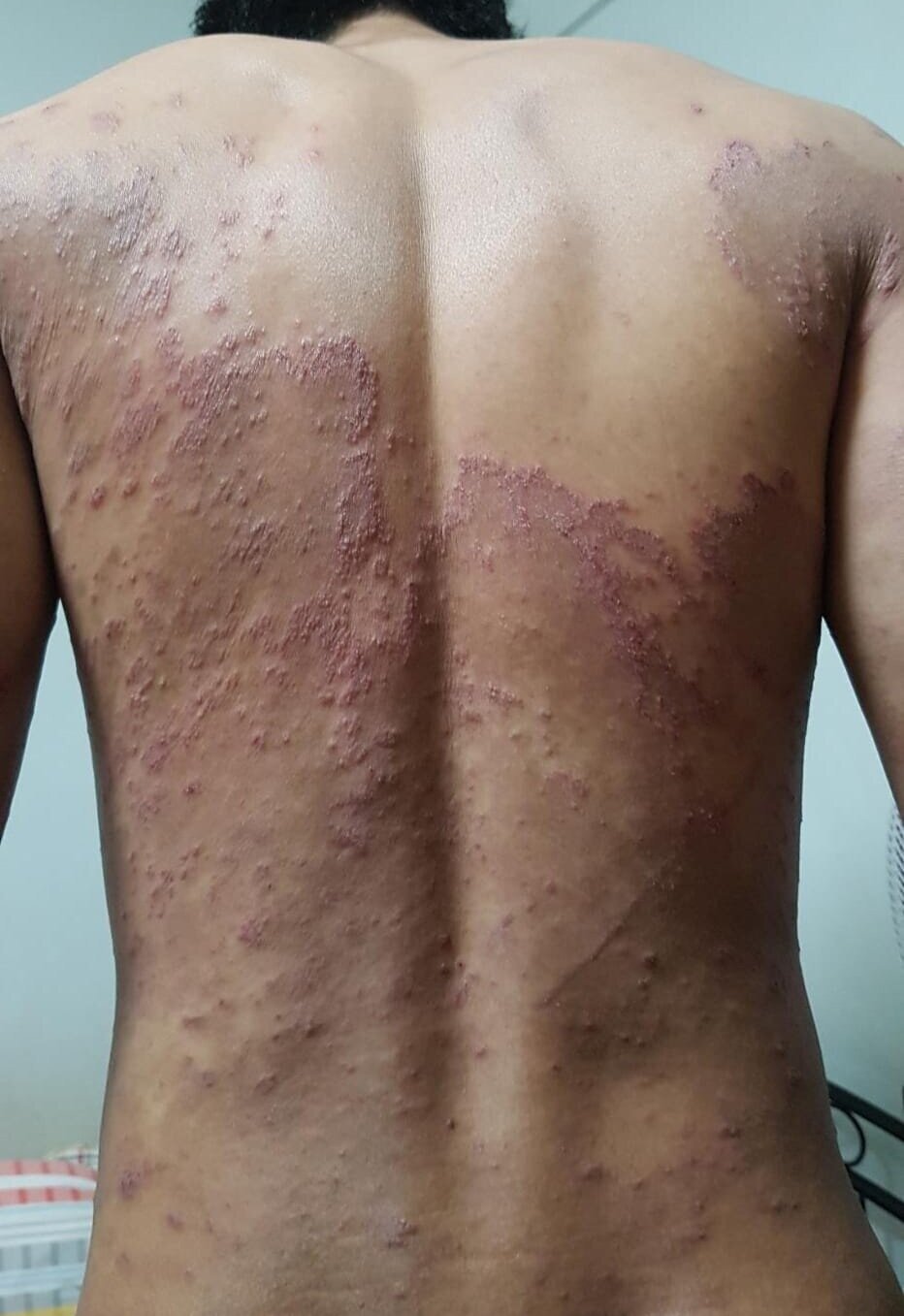What are the symptoms of skin fungus?
Skin fungus infections, or dermatophyte infections, can present with various symptoms depending on the specific type and location of the infection. Common symptoms of skin fungal infections include:
- Red, Itchy Rash: Often circular or ring-shaped, and sometimes with raised, scaly edges.
- Scaling and Peeling: The affected skin may become dry, flaky, or peeling.
- Blisters or Pustules: Small fluid-filled blisters or pustules may appear, especially in cases like athlete’s foot.
- Cracking or Ulceration: The skin may crack, become ulcerated, or have open sores, particularly in areas where the fungus causes severe irritation.
- Discoloration: The infected area may change color, ranging from red to brownish.
- Thickened or Discolored Nails: Infections like toenail fungus can cause nails to become thickened, discolored, and brittle.
- Hair Loss: Fungal infections of the scalp can lead to patchy hair loss.
- Odor: Infections like athlete’s foot can produce a foul odor due to the fungal growth and associated bacterial infection.
- Swelling: The affected area may be swollen, especially if the infection is severe or spreading.
If you suspect a fungal skin infection, it’s advisable to seek medical evaluation for proper diagnosis and treatment.
What are the causes of skin fungal infections?
Skin fungal infections are caused by various types of fungi, including dermatophytes, yeasts, and molds. The causes of these infections typically involve the following factors:
- Direct Contact: Fungal infections can spread through direct skin-to-skin contact with an infected person or animal. For example, ringworm can be transmitted through close contact with an infected person.
- Contaminated Surfaces: Fungi can thrive on surfaces like floors, towels, and bedding that are contaminated with fungal spores. Shared spaces such as locker rooms and swimming pools are common sources of infection.
- Infected Animals: Pets, particularly cats and dogs, can carry fungal infections like ringworm. Handling or coming into close contact with infected animals can spread the fungus.
- Weakened Immune System: Individuals with compromised immune systems are more susceptible to fungal infections. Conditions such as HIV/AIDS, cancer treatments, or autoimmune diseases can increase vulnerability.
- High Humidity and Warmth: Fungi thrive in warm, moist environments. Areas of the body that are frequently damp, such as the feet (athlete’s foot) or groin (jock itch), are more prone to fungal infections.
- Poor Hygiene: Inadequate personal hygiene, such as infrequent washing of body parts prone to sweating, can contribute to fungal growth.
- Skin Trauma: Cuts, abrasions, or other forms of skin damage can provide an entry point for fungi, leading to infection.
- Chronic Conditions: People with chronic conditions like diabetes or obesity are at increased risk of developing fungal infections due to factors like reduced blood circulation and skin folds that create favorable conditions for fungal growth.
Preventing fungal infections involves maintaining good hygiene, avoiding contact with infected individuals or animals, and keeping skin dry and clean.
What is the treatment for skin fungal infections?
The treatment for skin fungal infections typically involves antifungal medications and good hygiene practices. The choice of treatment depends on the type of fungal infection, its severity, and the specific area affected. Here’s an overview:
- Topical Antifungals: These are the first-line treatment for most skin fungal infections. Common topical antifungal agents include clotrimazole, miconazole, terbinafine, and ketoconazole. They are applied directly to the affected skin.
- Oral Antifungals: For more severe or widespread infections, or when topical treatments are ineffective, oral antifungal medications may be prescribed. These include terbinafine, itraconazole, or fluconazole.
- Antifungal Shampoos: For fungal infections affecting the scalp, medicated shampoos containing ketoconazole or selenium sulfide may be recommended.
- Good Hygiene Practices: Keeping the affected area clean and dry is crucial. Fungi thrive in moist environments, so maintaining good hygiene and ensuring the skin is dry can help in the healing process.
- Avoiding Contamination: To prevent spreading the infection, avoid sharing personal items like towels, clothing, or bed linens. Wash these items thoroughly in hot water.
- Treating Pets: If a pet is the source of the infection (e.g., ringworm), it may need to be treated with antifungal medications or topical treatments prescribed by a veterinarian.
- Managing Underlying Conditions: If the infection is related to a chronic condition such as diabetes, managing that condition effectively can help improve the treatment outcome.
- Regular Follow-Up: For persistent or recurrent infections, regular follow-up with a healthcare provider is important to ensure the infection is properly treated and to adjust the treatment plan if necessary.
Always follow the advice of a healthcare professional for diagnosing and treating fungal infections, as improper treatment can lead to complications or prolonged infection.

Leave a Reply
You must be logged in to post a comment.